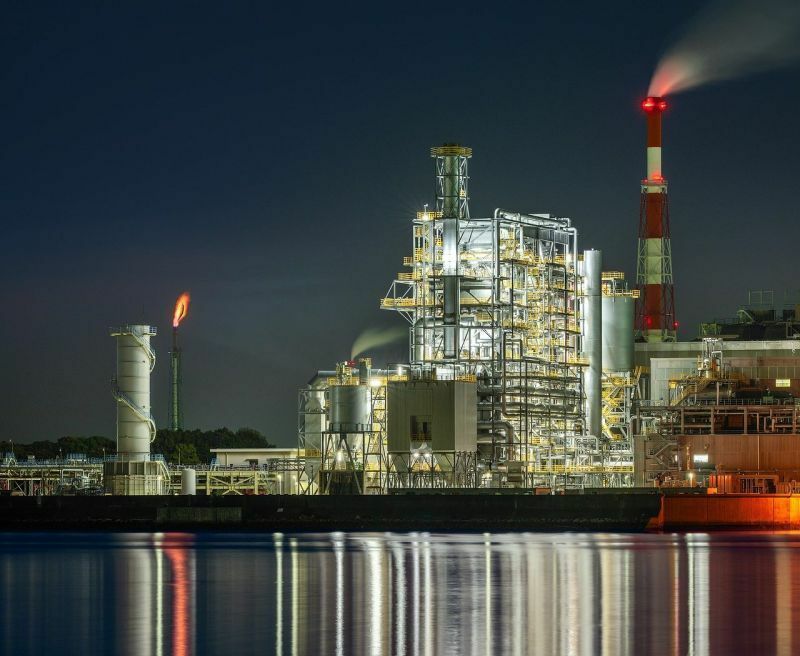
Some see natural gas (NGZ23) demand as nearing a peak. After all, the latest International Energy Agency (IEA) annual report stated that global demand for natural gas will peak this decade. And in Asia, the IEA sees consumption falling 40% by 2050, based on climate pledges by governments in the region.
Meanwhile, the message coming out of the Singapore International Energy Week conference last week was clear and quite different: Asia will need a lot more natural gas to help it transition from coal to renewable sources of power.
Asia Needs Lots of LNG
Here’s what oil industry executives and government policymakers at the conference in Singapore said about natural gas demand in Asia in the years ahead, as reported by Bloomberg’s Stephen Stapczynski:
- China’s natural gas demand will double through 2050.
- Panelists from India and Vietnam highlighted investments being made in pipelines and liquefied natural gas (LNG) import terminals that will ensure gas usage past 2050.
- Indonesian power producers and miners called for more funding for gas, as the fuel will help replace highly-polluting coal.
- Singapore committed to building an additional LNG import terminal to boost its energy security.
- Another 300 million tons of new LNG export capacity will be needed by 2030 to meet demand — roughly a 75% jump from today’s levels.
So where will all of this natural gas come from to meet Asian demand?
Of course, much of it will come from the current major exporters of liquified natural gas (LNG): Qatar, Australia, and the United States. But there is also another player in the mix: Africa.
Africa and FLNG
A number of countries on the continent are at the forefront of a global wave of new floating gas facilities, as these countries seek to meet surging demand in Asia and Europe as quickly and cheaply as possible.
Africa currently has more than 50% of the world’s FLNG capacity. Floating Natural Gas (FLNG) facilities are ships that can pump, liquefy, store and export gas directly from offshore fields.
FLNGs bypass extensive – and very costly – infrastructure needed to process gas onshore. Improvements in vessel technology and turnaround times have hastened demand since the launch of Shell PLC’s (SHEL) pioneering, but delayed, FLNG vessel Prelude, anchored off Australia.
A typical FLNG can be done for a fraction of the cost of a traditional (LNG production) train. Reuters reports that capex costs for Cameroon's Golar FLNG facility could be as low as $550 a ton. That compares to $900 to $1,100 per ton for a new onshore terminal on the U.S. Gulf Coast.
FLNGs also have a much quicker turnaround, with new-build ships able to produce just four years after initial investment. And don’t forget about FLNG vessels' mobility - they can be at a field for five or 10 years, and then move on to the next field.
Eni (E) and smaller independent players, such as Nigeria's UTM Offshore, are driving the surge, with projects on Africa's east and west coasts. It is estimated that West Africa has 240 trillion cubic feet of gas (4,900 million tons LNG), and East Africa has 100 trillion cubic feet of gas (2,100 million tons LNG).
Africa currently exports 40 million metric tons per annum (mmtpa) of gas. Floating Liquefied Natural Gas (FLNG) vessels shipped Mozambique's first-ever gas exports last November, and the Republic of Congo is preparing for its first LNG exports in December.
The energy research firm Westwood Global Energy expects Africa to add 10.2 mmpta in new FLNG capacity by 2027, with projects in Mozambique, Nigeria, Senegal, Mauritania and Republic of the Congo. Over the next five years, Westwood forecasts $13 billion in spending on FLNG, with Africa accounting for about 60% of the 18.3 mmpta of added FLNG capacity by 2027. It also expects a further 36.5 mmpta to come online after 2027, valued at $22 billion.
So how can you play this FLNG boom in Africa?
Golar LNG
One good way is through Golar LNG Limited (GLNG), which is the most experienced (50+ years) operator in the industry. The company has produced more LNG from a floating facility than any other operator.
With regard to Africa, Golar says its ample gas reserves, proximity to all major demand centers, combined with Golar’s market leading FLNG capex/ton production, provides for attractive economics for the monetization of proven gas reserves.
Its FLNG Hilli is a 2.4 mmpta facility, and has been operating off the coast of Kribi in Cameroon. It recently offloaded its 100th LNG cargo, so it is a moneymaker for Golar. Each $1 rise in the price of TTF gas (European benchmark) means another $3.2 million annually for Golar.
The next vessel, FLNG Gimi, is a 2.5 mmpta facility in its final phase of construction and is expected to be on location in December 2023. Golar already has a 20-year contract in place for it with BP (BP) offshore in Senegal and Mauritania, with annual adjusted EBITDA of $215 million, of which $151 million is attributable to Golar.
With these cash flows coming onstream, Golar restarted quarterly dividends (forward yield 4.46%) in the first quarter of 2023. Plus, it approved a stock buyback program of $150 million.
The stock is little changed year-to-date, offering a good entry price around $22 or $23 a share. I recommend buying GLNG for its rising cash flow. And global natural gas demand is not going to disappear, at least not for decades.








